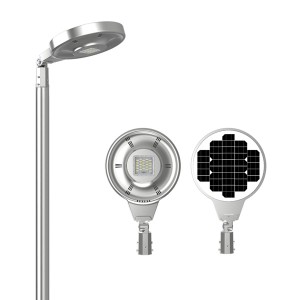“Taking them out is going to be a whole ‘nother challenge,” Enterline said. “But we are happy we were able to successfully complete the mission.
The news coming out of the North American and European energy markets indicates an industry that is soaking up innovation and opening its doors to unique solutions, while the African energy landscape struggles under a weight of murky governance, lack of funding, and operational stagnation.
Market barriers remain While utility interest and involvement in smart city deployments is increasing – particularly in North America and Europe – several key barriers to greater market participation remain. These barriers include regulatory challenges, utility business culture and organisational structure, technical and operational challenges, and the lack of a business case for some smart city applications. The configuration of these challenges is unique to each utility given its history, location, culture and current asset base, but there are many lessons to learn from the early leaders who are already establishing their footprint in the smart cities market.
Installation and integration of low-cost Long Range Lower Power Wireless Nodes (LoRaWAN) into vehicle parking structures and street parking are a growing industry and necessity to complete smart parking solutions. It is also a new opportunity for SIs.

That could include expanding access to high-speed internet in low-income neighborhoods, dimming or increasing street lights during car crash investigations or deploying data-driven applications that could be linked to the city’s pavement management plan, allowing them to monitor potholes and deteriorating street surfaces.
5.7 This Agreement may be executed in any number of counterparts, each of which shall be deemed an original, but all of which together shall constitute one and the same instrument.
1. Distributed energy resources One of the most obvious connections between city strategies and utility innovation is the push towards renewable energy. Cities are responsible for more than two-thirds of the world’s energy use and greenhouse gas emissions, and they have become increasingly aggressive in exerting pressure on utilities to shift from fossil fuels to renewable energy to help meet emissions targets. Cities are looking to install DER solutions in municipal buildings and are encouraging the adoption of residential and commercial clean energy solutions through programmes to support solar photovoltaics (PV), storage, combined heat and power systems, and other community energy schemes. Distributed renewables development and integration, distributed energy storage systems, and microgrids all offer the opportunity for utilities to make their energy services more efficient, resilient, cost-effective and sustainable. To date, utility efforts have been largely reactive, focused on issues caused by renewables intermittency, shifting loads, capacity constraints, and bidirectional power flows.
But the benefits are pretty obvious if marijuana growers are in it for the long haul. Aside from sizable up-front expenses, solar panels significantly reduce electricity costs in sunny growing regions of the country, and they’re environmentally friendly, thereby reducing greenhouse gas emissions.

Today, Chicago’s rat eradication program is 20% more effective. Plus, the city has developed other statistical models to predict hazardous levels of E. coli bacteria on city beaches and which restaurants are likely to violate health codes. What’ll they think of next?!
Integrated metering was introduced in 2003: the meter interface units designed by ADD GRUP enabled the integration of other resources into the metering system, such as water, gas and heat. It was followed by the launch of ADDAX Light – the solution for street lighting management.
Some of the major companies operating in global street lighting market are Bridgelux, Cree, GE Lighting, Acuity Brands, Inc., Digital Lumens, Inc., Encelium Technologies, Inc., Honeywell International, Legrand S.A., Lutron Elecronics, Co., Osram Licht AG, Royal Philips Electronics N.V.
The engineers analyzed the city’s previous set-up and recommended several important changes. They thought the chain was too long and the weight too light, Enterline said. Instead, they recommended a much shorter 25-foot chain with a much heavier 75-pound single concrete block at the bottom.
San Diego’s Smart Streetlights Yield a Firehose of Data | Integrated Solar Street Light 30w Related Video:
abide by the contract", conforms to the market requirement, joins in the market competition by its high quality as well as provides more comprehensive and excellent service for clients to let them become big winner. The pursue of the company, is the clients' satisfaction for Integrated Stand Alone Solar Street Light, Solar Light, All In One Integrated Solar Led Street Light, We hope we can establish long-term cooperation with all of the customers. And hope we can improve competitiveness and achieve the win-win situation together with the customers. We sincerely welcome the customers from all over the world to contact us for anything you need!
